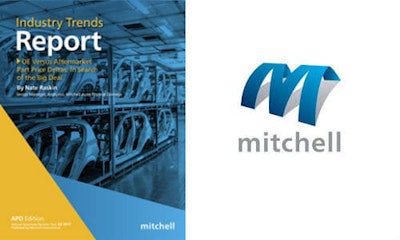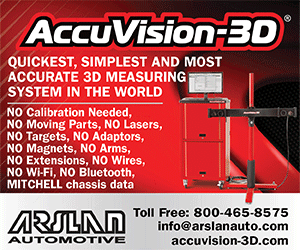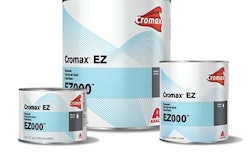
San Diego, California — June 13, 2017 — Mitchell has released its Industry Trends Report (ITR) for the second quarter of 2017. In this edition, Mitchell executives take a look at how artificial intelligence (AI) is being used in the insurance industry and the use of scanning tools for complex autobody repairs. The report’s feature article looks at how the price gap between OEM and aftermarket parts has continued to decrease over the past seven years as a result of greater competition.
An estimated 85 percent of insurance executives are planning to invest significantly in artificial intelligence over the next three years, according to a recent study by Accenture. With that, AI is poised to significantly alter the insurance industry in a multitude of ways, including streamlining the claims process, reducing fraud and improving outcomes for both the claimant and the insurance company.
The latest Mitchell ITR also looks at the evolving nature of collision repair itself. The traditional repairs, cosmetic and structural, are as important as ever, but increasingly sophisticated electronics have added to the burden on repairers. Today’s repairers must be prepared to fix a computer on wheels. Due to the complexity of these systems, scan tools are useful to determine what systems should be reset or recalibrated. The Mitchell report notes that there are essentially four options for repairers to scan a vehicle before and after repairs to ensure systems are working properly:
• Take the car to the dealership
• Call a mobile service provider
• Use an aftermarket tool to complete the repairs in-house
• Leverage a remote service to connect to an OEM tool via the Internet
In the trends report, Mike Lawlor, Vice President, APD Strategy and Partnerships for Mitchell, discusses repair safety concerns, OEM position statements and how collision repair facilities can manage the diagnostic portion of repairs in order to help ensure safety, reduce cycle time and properly document diagnostic procedures.

















